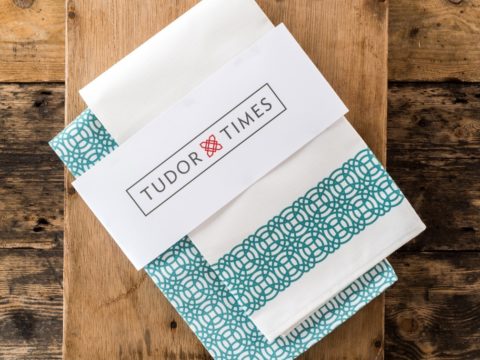Margaret Tudor: Life Story
Chapter 12 : Estrangement from Angus
With Angus openly living with another woman, Margaret began to think of how she might rid herself of a husband who was not only no support to her, but was also a contributing factor to keeping her out of any role in her son’s government.
Over the next two years, she wrote increasingly importunate letters to Henry and Wolsey, asking for money and support, and began to talk of separating from Angus. Her husband resisted and he now went back completely on his agreement that Margaret should control her jointure, demanding his full rights to it as her husband. Arran supported Margaret, but Angus merely laughed in the face of the Council’s demands to restore Margaret’s rents and nothing was done to enforce them. Eventually, she was constrained to pawn her jewels and borrow money to meet her basic expenses.
In October 1518, she wrote to Henry that she and Angus had not lived together for six months, and that she was ‘so minded that m an I may by the law of God and to my honour to part with him, for I wit well he loves me not.’
Henry would not countenance such a notion and sent Friar Chedworth to remonstrate with his sister. Although dissolution of marriages was certainly not uncommon amongst royalty and nobility generally (and particularly frequent, it appears, in Scotland) there were certain forms that had to be observed to give the whole proceeding an air of legitimacy. The usual grounds for an annulment were a pre-contract to someone else, or non-consummation. Whilst children of dissolved marriages were considered to be legitimate if the union had been entered into in good faith, a taint of bastardy might hang over them, and the potential effect on Margaret’s daughter, Margaret Douglas, was given by Henry as a reason against his sister entertaining such a notion.
Both Margaret and Angus appear to have accepted the Friar’s intervention and effected a reconciliation. In October 1519, he met her in Edinburgh (he controlled the city through his uncle, Archibald Douglas of Kilspindie, the Lord Provost) and they rode together through the city to visit the King.
Despite having dropped the idea of an annulment, Margaret was still bitterly unhappy about the state of her finances, and the limited access she had to her son. She continued to hope for redress from Henry and with her letters to him and Wolsey certainly bordering on treasonable, it is not surprising that the Scots Lords did not trust her
‘His Grace (Henry) promised me…that Scotland should never have peace from England without I were well done by, which is not done…wherefore I beseech His Grace to remedy it hastily…’
Henry, however, was not inclined to intervene militarily, having concluded a treaty with France by which his daughter, Mary, was to married to the Dauphin.
At her wit’s end, Margaret began to encourage Albany to return, in accordance with the wishes of the Council. She explained her action to Dacre, who had questioned her undermining of Henry’s wish to keep Albany away by saying that she feared to cross the Lords, especially as Henry had told her not to do anything whereby ‘the Lords might have occasion to complain of me.’
On 3rd June 1520, the Arran and Angus factions came to outright warfare during a skirmish known as ‘Cleanse the Causeway’, an open battle in the streets of Edinburgh that ended with over seventy men dead, including Sir Patrick Hamilton, Arran’s brother.
Margaret, who had now been totally alienated by Angus’ infidelity and his control of her rents, took the part of Arran, and the spouses descended into implacable acrimony. Angus was supported by all his Douglas relatives, even Gavin Douglas, for whose sake Margaret had endured much trouble when she put him forward for the Archbishopric of St Andrew’s.
Eventually, the pleas of the Scots nobles for Albany’s return were heeded by Francois, who sent the rather reluctant Duke back into the fray. He returned to take up his duties in November 1521 and was greeted at Linlithgow by Margaret with every appearance of pleasure. The pair entered Edinburgh together, and from this time forward seemed to have worked side-by-side. Albany relieved Angus of all the offices he had accrued in Albany’s absence, but proceeded no further against him and the two were reconciled, although it is disputed as to which made the first overtures. It certainly seems that Margaret, although she regretted her marriage to Angus heartily, pleaded for his forgiveness.
Margaret, Queen of Scots
Family Tree




